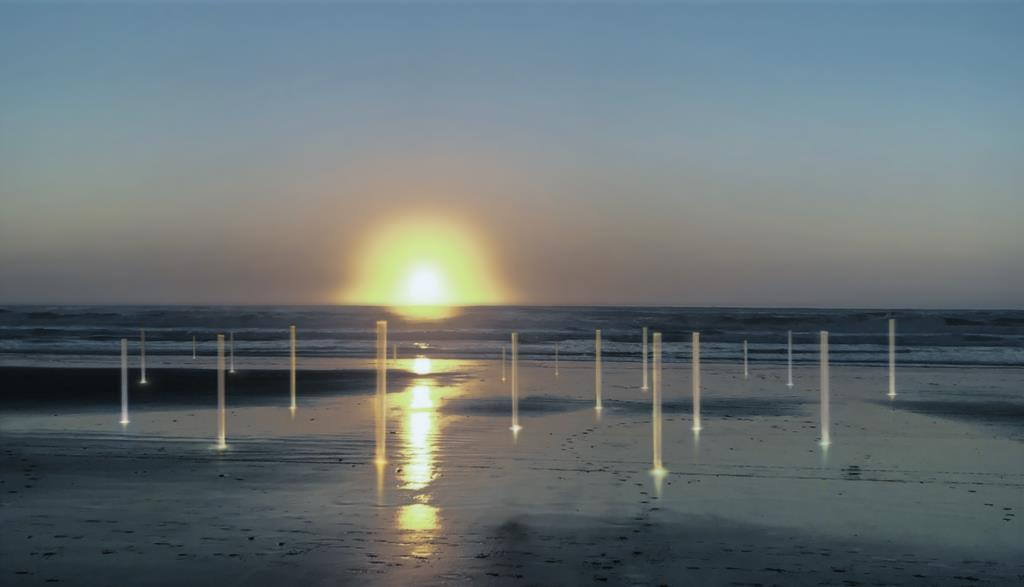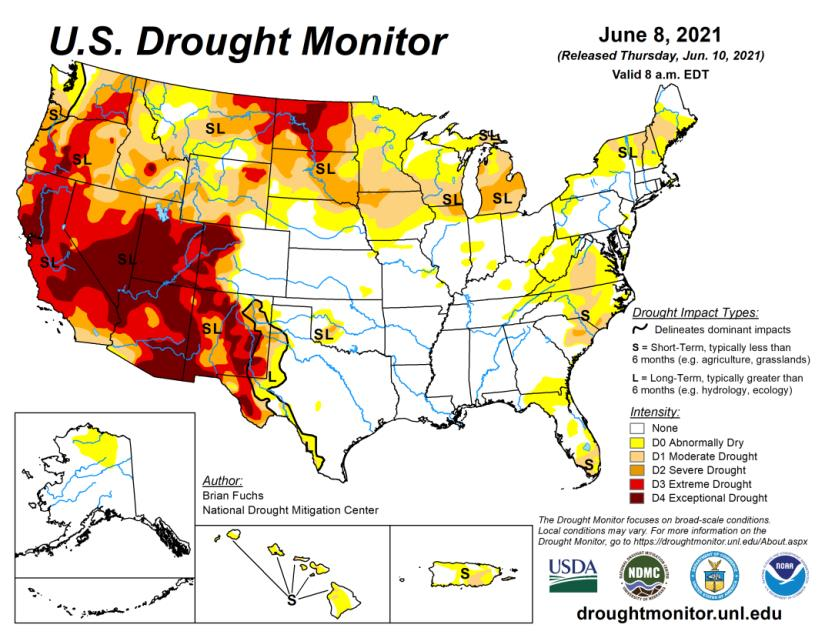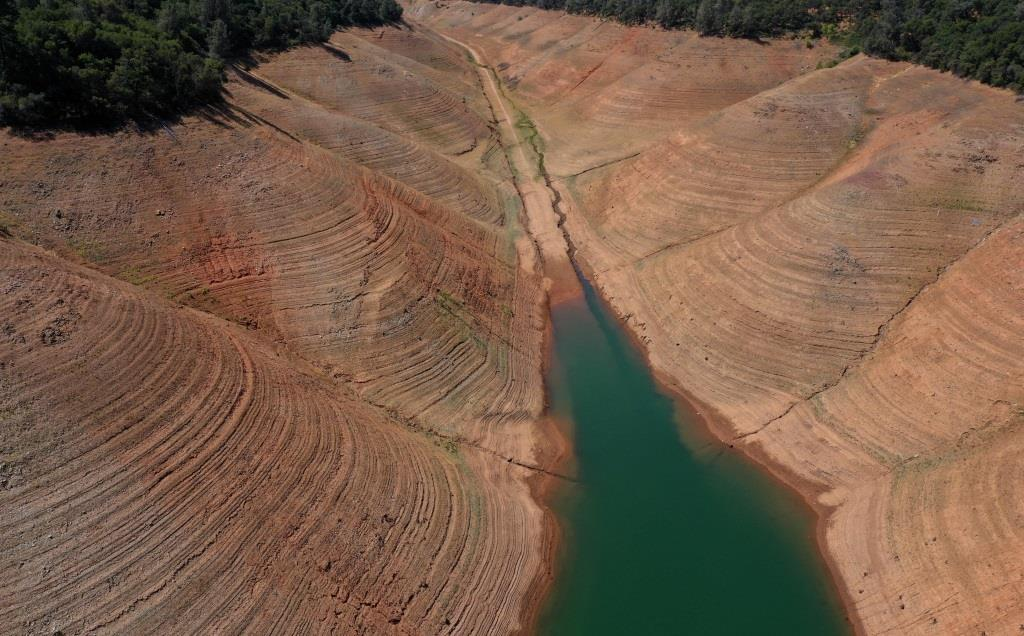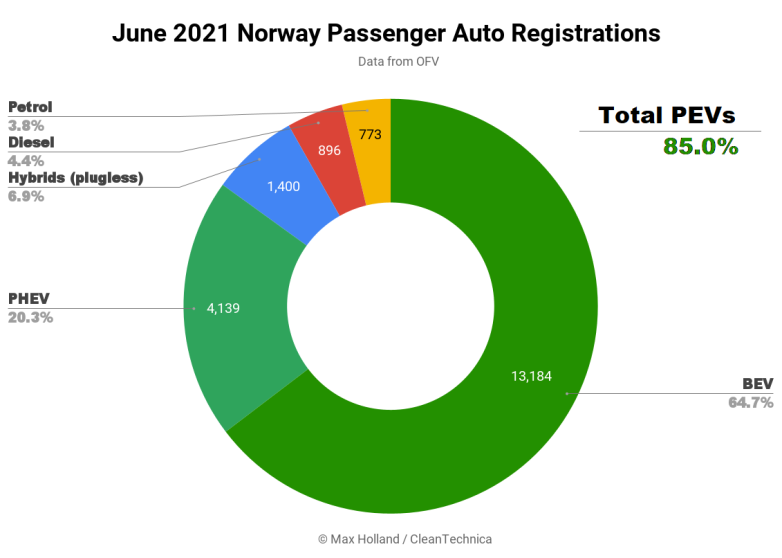An Artist and Science Look at Sea Level Rise, Drought and More
While visiting a beach on the Pacific she looked at the horizon and tried to imagine a sea level rise [SLR] of that magnitude and what it would mean. She conceived of the idea to install 19, six-foot high acrylic resin cylinders filled with sea water standing at the edge of the ocean, with waves lapping on the beach and around them. Her intent was for individuals “to experience the relationship of their body to what the future will feel and look like. We are in the present, posing with the future.”
Two images here illustrate her work. The first is a single column at sunset from her website, onthehorizon.org, and the second is all 19 columns, also at sunset, with waves lapping at their base. The challenge has been to take something from the future and put it into the present.

Her hope is “that the work will spark a conversation among viewers about the areas that will be most at risk with sea rise.” Second photo is by Ana Teresa Fernandez.

And while SLR is a direct result of fresh water pouring into the oceans from melting glaciers and ice caps, as well as expansion of the sea water itself as a result of its warming, other areas of the planet, and right now in the West and Southwest, are in drought. The irony is that this fresh melt water, needed in so many places for farming and drinking water, is mixing with salt water.

Not mentioned so far is that higher winter temperatures do not reduce certain insect populations such
The enormous emissions of carbon dioxide and other GHG’s are a direct cause of the warming, and show no signs of abating. The past year with COVID and the lockdown, slowed up emissions somewhat but we are back on track with business-as-usual to resume global emissions to pre-COVID levels.

However, the times they are a changing.
Here is an interesting quote. “There is not a regulated coal plant in this country that is economic today, full period and stop.” Who said that? Those words came from the CEO of the country’s largest electricity utility, Jim Robo of NextEra Energy, at a conference in March of this year. He indicated that the reason “coal-fired power is unprofitable everywhere in the country” was due to less expensive sources such as solar, wind and gas.
One telling factor of coal’s decline is the falling “capacity factor,” which “is a percentage that shows how much the plants are being used compared to their full capacity” [insideclimatenews.org/news]. Thenational average that coal plants are actually used compared to their full capacity is now less than 50% of the time.
This is a reflection of the “energy disruption” that is underway right now. Another example of the change from fossil fuels to renewables that is on-going is in Norway. Government policies and the availability of a variety of electric vehicles have had an enormous change in sales of internal combustion engines which are falling rapidly. In June 2021, as seen in the circular graph labeled “June 2021 Norway Passenger Auto Registrations,” 85.0% of all new cars were plug in electric vehicles [PEVs]. This includes 64.7% BEV [battery electric vehicles] and PHEV’s [plug-in hybrid EVs] at 20.3%.
This is progress and these sales numbers are up 66.3% from June 2020!

These are just a few of the promising developments on-going today.
And, so it goes
The scientific career of Raymond N. Johnson, Ph.D., spanned 30 years in research and development as an organic/analytical chemist. He is currently founder and director of the Institute of Climate Studies USA (www.ICSUSA.org). Climate Science is published monthly.



